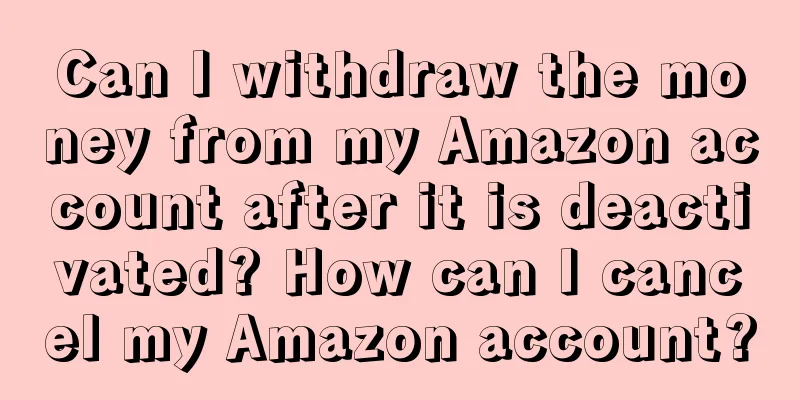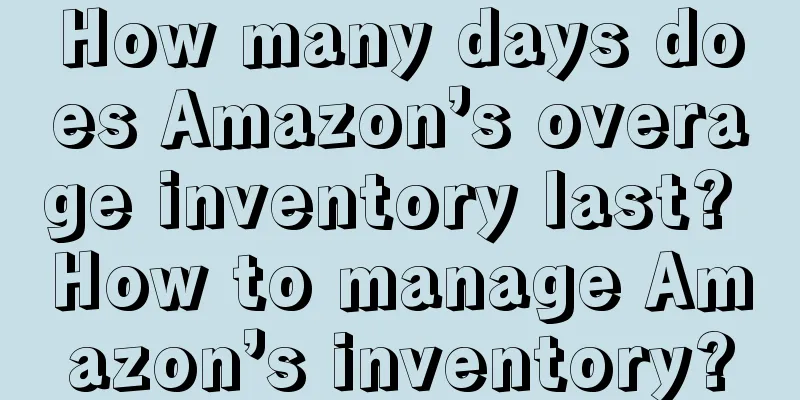Building a marketing activity system (Part 1): Prize system

In the existing marketing system, the most common form of marketing activities is that users participate in XX activities (complete XX tasks), and the system automatically or manually distributes XX prizes. This is an activity in the cognitive habits of most people. Through the above sentence, we can divide the marketing system into two parts: the prize system and the activity system. Below we briefly introduce and analyze these two systems respectively. 1. Prize SystemThe prize system is an important part of the entire marketing system (people in the industry are accustomed to mixing these two systems together. For the sake of convenience in this article, I will call it the prize system). The activity system can exist independently of the prize system, but most prize systems exist in conjunction with a marketing activity system or a user growth system. The following is a more common prize system (of course there are some more niche prize systems, which are not discussed in this article). This prize system is also applicable to traditional offline physical industries. 1.1 CouponsBefore starting this section, let me ask a question: Why are the prices of products not directly reduced, but can only be enjoyed by using coupons? This involves an important economic concept: differential pricing (also called price discrimination). Simply put, customers ABC will purchase the same product at different prices, thereby maximizing the profits of the merchant or platform. For example: a cup of milk tea costs 5 yuan. If the price is 10 yuan, 100 people will accept this price to buy it, and if the price is 15 yuan, only 60 people will buy it. The profit of the former is 100*(10-5)=500 yuan, and the latter is 60*(15-5)=600 yuan. So the question is: should the merchant set the price at 10 yuan or 15 yuan, or between 10-15 yuan, 12 yuan, or 14 yuan? According to the above differential pricing theory, the merchant can set the price at 15 yuan, and then issue 5 yuan coupons to the 40 customers with the highest willingness to pay 10 yuan, and not issue coupons to the remaining 60 consumers, thus achieving differential pricing in disguise. At this time, the merchant's profit can be maximized to 60*(15-5)+40*(15-5-5)=800 yuan. As for how to distribute the 5-yuan coupons to 40 customers and how to prevent the other 60 customers from noticing that they are being treated differently, this is a very large area and should not be elaborated here. Summary: Coupons are essentially a "price discrimination" strategy, which is a price differentiation made by merchants based on the needs of different consumers ABC. It is a reasonable pricing behavior of merchants in pursuit of profit maximization. Coupons are classified according to different classification dimensions and standards, mainly in the following ways:
Coupons vary greatly depending on the industry. For example, there is a big difference between the common e-commerce coupons and the financial coupons for financial lending products. The picture below shows the coupons for a certain financial product, which can be divided into 7 categories according to usage scenarios and discount methods (different financial products and companies may have differences, for example, Vipshop’s financial coupons are quite different from the financial coupons in the picture below). Depending on the usage scenario of the coupon, there are also the following special coupons:
As for the specific implementation logic and methods of coupons, it can be described in a separate article, so I will not expand on it here. Finally, coupons actually have a psychological dimension. What users need is not necessarily to get a bargain, but the feeling of getting a bargain. 1.2 PointsBefore starting this section, there is still a question: Why do products need points? What is the meaning of points? Many companies or products have added points to the product system (or user system) without thinking through the above question, and explained the above question with the logic of "increasing user activity and loyalty, and increasing user participation and sense of achievement". But does this logic work?
Many companies and products tend to confuse points and membership (levels) when they are working on them. After all, points and membership often appear in pairs, which leads people to think they are the same thing, but in fact they are not. Points exist in conjunction with membership. In addition to points, members also have levels, rights, growth achievements and other subdivided areas.
But in fact, many products kill two birds with one stone. Points exist as virtual currency, which can be used to deduct cash or exchange for goods or participate in lotteries, etc. The membership level is automatically determined according to the point value, and different membership rights and interests can be enjoyed according to different membership levels. Back to the original question. Whether a product needs points needs to be analyzed based on the product form and user scale. For example, for information products, I personally think that user level is more important than points, while e-commerce transaction products are more suitable for introducing points as a virtual currency. As mentioned in the previous article, [what users need is not necessarily to get a good deal, but the feeling of getting a good deal]. If the price and delivery time of a certain product are the same on platform A and platform B, most people will choose platform A which gives points (points can be used as cash or exchanged for goods). After all, it makes users feel that they are getting a good deal. The entry threshold of points is not high, but the threshold after entry is very, very high. As mentioned earlier, points with consumption exports (consumption deductions, points redemption) are debts, and not everyone can afford it. Furthermore, the most difficult thing about points is that the input-output ratio is difficult to calculate, and the balance between points output and consumption is not easy to control. 1.3 Cash bonusBefore starting this section, there is still a question: Why do we need cash red envelopes after having coupons and points? As mentioned above, coupons emerged due to price discrimination and profit maximization, and points exist mainly for user loyalty and engagement. What is the business background of cash red envelopes? As far as I know, cash red envelopes are mainly generated by company or product operation promotion, especially in the scenario of bringing in new customers. Real cash red envelope rewards are much more attractive to old customers, promoters or inviters than flashy coupons or points (in the eyes of most users, the value of cash red envelopes is higher than points and coupons). Of course, points seem to be able to partially meet the above requirements to some extent, but some business rules and restrictions of red envelopes determine that if points are used as a substitute or equivalent for cash red envelopes, major changes will need to be made to the points. For example, cash red envelopes require real-name verification, red envelope withdrawals require bank card binding, and there is a first-come-first-served system when red envelopes are distributed (for example, a cash red envelope with a face value of 30 yuan is distributed on April 23, and the red envelope will take effect on May 1). There are withdrawal restrictions on red envelopes, and red envelopes need to be transferred to a wallet first and then withdrawn from the wallet to a bank card, etc. If the above restrictions are implemented based on the existing points system, it is theoretically feasible, but it is not recommended for development and business architecture. Because the points of some products also carry the functions of user level and rights, adapting the red envelope based on this will make the points system very bloated and highly coupled, which is not conducive to later expansion and maintenance. Some companies have multiple products, and the points between products can be exchanged for each other in proportion (for example, 10 QQ Music points can be exchanged for 20 QQ membership points). In simple terms, the functional attributes and usage scenarios of points and red envelopes determine that it is most appropriate for them to be independent. For these reasons, cash bonuses came into being. The following figure is an introduction to cash bonuses in a financial product prize system. Cash red envelopes are similar to WeChat wallet balances, which can be used for consumption (shopping) and withdrawals on the platform. The difference is that cash red envelopes can only be obtained through activities, and do not support increasing cash red envelope balances through recharge. 1.4 Physical ProductsAs the name suggests, real objects are used as prizes. For example, if you purchase an annual membership on NetEase Wugu Reading, you will get a complete set of physical books of "Those Things in the Ming Dynasty" for free. For example, the first prize of the NetEase mailbox points lottery is an iPhone. The appeal of physical products is comparable to that of cash red envelopes, but customers are required to fill in the delivery address, and the platform or operator needs to carry out logistics delivery. A few dozen copies may be okay, but if a large number are distributed, it means a huge workload. For example, as shown in the picture below, the JD Spring Festival Gala interactive prizes include nearly 400,000 physical prizes of roses and milk. In JD’s view, the difficulty level is average, after all, express logistics is their core skill. But if Alipay or WeChat were to organize this event, it would be a huge workload to verify the delivery information and arrange the shipment for the 400,000 winning users (it might also be necessary to create gift orders for the customers and then associate the logistics delivery information with the orders). If Alipay or WeChat were to organize this event, they might be more willing to send red envelopes. 1.5 Third-party rightsWe will call other reward systems that cannot be classified into the above four types as third-party benefits (this is the name used in this article).
1.6 Gift PacksCombine the above prizes 1-5 into a new gift package, such as recharging 1999 yuan to get gift package A, recharging 5999 yuan to get gift package B. In fact, the Taobao 88VIP in the picture above is also a gift package prize. 1.7 Comparison of Reward Systems |
<<: Xiaohongshu’s standardized process for post-investment review
Recommend
If you log out of Facebook, can others still find you? Is the content still there?
In the age of social media, Facebook is one of the...
618: Short dramas promoting products, a new battlefield between Alibaba and Pinduoduo
This article mainly discusses the phenomenon of e-...
How to join shein cross-border e-commerce? What qualifications are required to join?
As the global e-commerce market continues to expan...
Money is the key to a marriage, but live dating has risks
Some time ago, Wang Po from Kaifeng became popular...
How does Pinduoduo drag down prices?
In the face of actual losses from production, how ...
Is there a high demand for short videos on Amazon? What are the results?
Nowadays, it is quite popular to sell goods throug...
Shopee Official Wallet January Advertising Gold Activity Description
Shopee Official Wallet Advertising Bonus Incentive...
It is crucial to run Xiaohongshu's grass-roots conversion across the entire network and use this model well
How to use Xiaohongshu to achieve full network con...
The character of "profiteer" is well-established, with 1 million followers in 7 days
"Swindlers" sell products with double-di...
Exquisite self-pleasing, reverse parenting, has the marketing strategy of maternal and infant brands changed?
Maternal and infant brands have introduced Interne...
July Marketing Strategy | How can brands seize the user's mind and take advantage of it accurately?
Editor's note: July is coming, and within 30 d...
Heytea's "I am Buddha holding a cup" trended on the Internet, it's really fun
This article uses the popular Heytea joint product...
Can I get a product back after it’s deleted by Amazon? Detailed answer
Some Amazon merchants accidentally delete products...
No experience, no writing
Copywriting without experience is like instant noo...
618 is still inseparable from Li Jiaqi
This year's 618 e-commerce promotion is not on...









